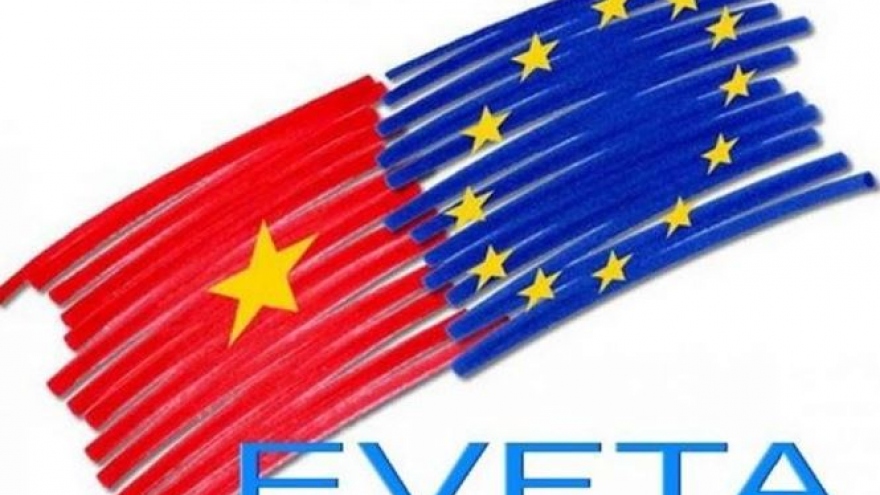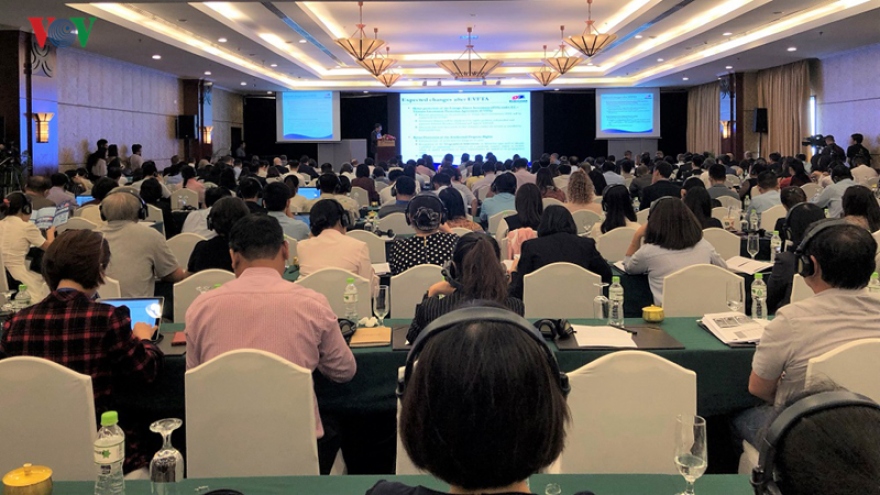Firms keep closer watch on EVFTA opportunities
VOV.VN - Enterprises in the south are maximizing efforts to prepare material sources and expand production bases in the hope of further boosting exports to EU markets when the EU-Vietnam Free Trade Agreement comes into effect.
 |
| Illustrative image. |
Trung Quy has made bold investments in installing fibre, dying, and clothing production lines imported from Germany and Italy, in order to increase its productivity capacity by five times to reach 1.5 million meters of cloth per month. This firm also plans to further increase the overall capacity in the near future.
Having specialized in producing footwear exports for decades, Vinh Thong is pursuing an ambitious plan to make some 2 million pairs of winter shoes exclusively for the Germany market.
In order to seize the imminent opportunities of the EVFTA, Vinh Thong has built an additional shoe factory in the Mekong Delta city of Can Tho whilst installing a completely new production line along with two automated leather cutting machines, thus increasing its total capacity by 10 times.
The footwear firm has also been active in accumulating input materials which meet origin rules as required in the trade deal. Despite these developments, the company is likely to face a shortage of input materials necessary for large orders as the domestic input source remains fragmented.
According to the Shoe and Leather Association of HCMC, the localization rate of the domestic leather and footwear industry has reached 30 - 40 per cent to date.
The HCMC Textile and Garment - Embroidery Association has suggested that in the face of the restricted supply of input materials, domestic firms must nurture alliances with overseas partners in a bid to seek additional provisions. The EVFTA in particular prescribes cumulative origin rules, which permits local firms to use materials imported from EU member countries for creating products that are receptive to EU markets.
Vietnam has so far signed 13 FTAs with partners worldwide, including two new-generation deals - EVFTA and Comprehensive and Progressive Agreement for Trans-Pacific Partnership (CPTPP). However, incentives emerging from these FTAs have yet to be fully optimized by a large number of nationwide firms and those in the southern region in particular.
Civil society and business organizations of HCMC have suggested that State management agencies should provide local firms, especially small and medium - sized ones, with additional support in order to enhance their competitiveness, technological innovations, and branding strategy.
In turn, local firms must take full advantage of EVFTA - prescribed clauses and requirements, notably those relating to goods origin and the roadmap to eliminate tariff lines and non-tariff barriers.
Both EVFTA and EU-Vietnam Investment Promotion Agreement, signed by both sides in Hanoi on June 30, are expected to enable Vietnamese goods to make deeper inroads into EU markets and subsequently boost the market share of Vietnamese goods to 40 per cent from 20 per cent in the future.
Pham Ngoc Hung, vice chairman of the Business Association of HCMC, recommended that the Ministry of Industry and Trade and commercial counsellors in EU member countries should aid local firms in implementing procedures for exports to the trading bloc as well as set forth mechanisms aimed to support firms in the face of legal disputes and anti-dumping claims.


